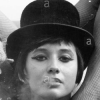void FinalizeScene()
{
glBindFramebufferEXT(GL_FRAMEBUFFER_EXT, 0);
glLoadIdentity();
glTranslatef(0,0,-1);
glDepthFunc(GL_ALWAYS);
glClear(GL_COLOR_BUFFER_BIT | GL_DEPTH_BUFFER_BIT);
glClientActiveTextureARB(GL_TEXTURE0);
glEnable(GL_TEXTURE_2D);
glBindTexture(GL_TEXTURE_2D, FrameTexture);
glGenerateMipmapEXT(GL_TEXTURE_2D);
glDisable(GL_LIGHTING);
glColor4f(1,1,1,1);
glOrtho(0, ViewportWidth, 0, ViewportHeight, -1, 1);
glBegin(GL_QUADS);
glTexCoord2f(0,0);
glVertex2f(0,0);
glTexCoord2f(0,1);
glVertex2f(0,ViewportWidth);
glTexCoord2f(1,1);
glVertex2f(ViewportHeight, ViewportWidth);
glTexCoord2f(1,0);
glVertex2f(ViewportHeight,0);
glEnd();
SwapBuffers(hDC);
glBindFramebufferEXT(GL_FRAMEBUFFER_EXT, FrameBufferObject);
}
Rendering A Fullscreen quad using an orthographic viewport.
After rendering my scene to a texture using FBOs, I want to setup a fullscreen quad that I overlay the image over. the thing is, I don't see anything except when I translate with some -Z value. what would be causing that?
code:
void FinalizeScene(){ glBindFramebufferEXT(GL_FRAMEBUFFER_EXT, 0); glLoadIdentity(); glTranslatef(0,0,-1); <-- Is that really supposed to be there? glDepthFunc(GL_ALWAYS); glClear(GL_COLOR_BUFFER_BIT | GL_DEPTH_BUFFER_BIT); glClientActiveTextureARB(GL_TEXTURE0); glEnable(GL_TEXTURE_2D); glBindTexture(GL_TEXTURE_2D, FrameTexture); glGenerateMipmapEXT(GL_TEXTURE_2D); glDisable(GL_LIGHTING); glColor4f(1,1,1,1); glMatrixMode(GL_PROJECTION); <-- Insert this line glLoadIdentity(); <-- And this one glOrtho(0, ViewportWidth, 0, ViewportHeight, -1, 1); glMatrixMode(GL_MODELVIEW); glBegin(GL_QUADS); glTexCoord2f(0,0); glVertex2f(0,0); glTexCoord2f(0,1); glVertex2f(0,ViewportWidth); glTexCoord2f(1,1); glVertex2f(ViewportHeight, ViewportWidth); glTexCoord2f(1,0); glVertex2f(ViewportHeight,0); glEnd(); SwapBuffers(hDC); glBindFramebufferEXT(GL_FRAMEBUFFER_EXT, FrameBufferObject);}Don't know if this is the correct fix... You might try to use gluOrtho2D instead of glOrtho.
Edit: And another thing. Instead of setting the depth function to GL_ALWAYS, you might as well disable depth testing: glDisable(GL_DEPTH_TEST);
Hope this helps.
the easiest method for a fullscreen quad is
set both modelview + project to the identity matrix
and draw a quad of coordinates (-1,-1) -> (1,1)
set both modelview + project to the identity matrix
and draw a quad of coordinates (-1,-1) -> (1,1)
now the code for fianlizeScene is:
I can see the textured quad, but it's unaligned with the screen. any ideas?
glBindFramebufferEXT(GL_FRAMEBUFFER_EXT, 0); glLoadIdentity(); //glTranslatef(0,0,-1); glDisable(GL_DEPTH_TEST); glClear(GL_COLOR_BUFFER_BIT | GL_DEPTH_BUFFER_BIT); glClientActiveTextureARB(GL_TEXTURE0); glEnable(GL_TEXTURE_2D); glBindTexture(GL_TEXTURE_2D, FrameTexture); glGenerateMipmapEXT(GL_TEXTURE_2D); glDisable(GL_LIGHTING); glColor4f(1,1,1,1); glOrtho(0, ix_FrameWidth, 0, ix_FrameHeight, 0, 1); //gluOrtho2D(0,ix_FrameWidth, 0, ix_FrameHeight); // not working. glBegin(GL_QUADS); glTexCoord2f(0,0); glVertex2f(0,0); glTexCoord2f(0,1); glVertex2f(0,ix_FrameWidth); glTexCoord2f(1,1); glVertex2f(ix_FrameHeight,ix_FrameWidth); glTexCoord2f(1,0); glVertex2f(ix_FrameHeight,0); glEnd(); SwapBuffers(hDC); glBindFramebufferEXT(GL_FRAMEBUFFER_EXT, FrameBufferObject);I can see the textured quad, but it's unaligned with the screen. any ideas?
I just set my viewport to ortho and draw a quad as if It was a2d screen with Depth testing turned off.
Whya re you making mipmaps of your frame texture? Seems you'll only ever need 1 of them? Am I missing something? You seem to be doing a lot of work there for little effect.
glOrtho(0, nWidth, 0, nHeight, -1, 1); glBegin(GL_QUADS); glTexCoord2f(0.0f,1.0f); glVertex2i(0,nHeight-1); glTexCoord2f(0.0f,0.0f); glVertex2i(0,0); glTexCoord2f(1.0f,0.0f); glVertex2i(nWidth-1,0); glTexCoord2f(1.0f,1.0f); glVertex2i(nWidth-1,nHeight-1); glEnd();Whya re you making mipmaps of your frame texture? Seems you'll only ever need 1 of them? Am I missing something? You seem to be doing a lot of work there for little effect.
Quote:Whya re you making mipmaps of your frame texture?
It is a good idea to use a mipmapped texture in OpenGL if his texture widh and height are not powers of two. If this is the case, than using a different texture filtering method would cause a MAJOR slowdown in his application.
But here's my reccomendation. Click the link on my sig and try using that method. But the point (0,0) is in the bottom left hand corner so you will have to do some minor calculations to move the (0,0) coordinate back to the top.
Quote:Original post by Code-RYou still aren't switching to the projection matrix before you call glOrtho (at least not in what you posted).
now the code for fianlizeScene is:
*** Source Snippet Removed ***
I can see the textured quad, but it's unaligned with the screen. any ideas?
Quote:Original post by James TrotterglMatrixMode(GL_PROJECTION); <-- Insert this line glLoadIdentity(); <-- And this one glOrtho(0, ViewportWidth, 0, ViewportHeight, -1, 1);
And yeah, there's no need for mipmaps if the texture will always be the same size on screen.
EDIT: Just a note, gluOrtho2D is the same as glOrtho with the near and far parameters set to -1 and 1, respectively.
ok, so now it's
The results are much better, but they're still not perfect. the quad doesn't fill the screen, it leaves a border on the right/bottom. any ideas?
glBindFramebufferEXT(GL_FRAMEBUFFER_EXT, 0); glMatrixMode(GL_PROJECTION); glLoadIdentity(); glOrtho(0, ix_FrameWidth, 0, ix_FrameHeight, 0, 1); //glTranslatef(0,0,-1); glDisable(GL_DEPTH_TEST); glClear(GL_COLOR_BUFFER_BIT | GL_DEPTH_BUFFER_BIT); glClientActiveTextureARB(GL_TEXTURE0); glEnable(GL_TEXTURE_2D); glBindTexture(GL_TEXTURE_2D, FrameTexture); glGenerateMipmapEXT(GL_TEXTURE_2D); glDisable(GL_LIGHTING); glColor4f(1,1,1,1); //gluOrtho2D(0,ix_FrameWidth, 0, ix_FrameHeight); glBegin(GL_QUADS); glTexCoord2f(0,0); glVertex2f(0,0); glTexCoord2f(0,1); glVertex2f(0,ix_FrameWidth); glTexCoord2f(1,1); glVertex2f(ix_FrameHeight,ix_FrameWidth); glTexCoord2f(1,0); glVertex2f(ix_FrameHeight,0); glEnd(); SwapBuffers(hDC); glBindFramebufferEXT(GL_FRAMEBUFFER_EXT, FrameBufferObject);The results are much better, but they're still not perfect. the quad doesn't fill the screen, it leaves a border on the right/bottom. any ideas?
Here's what I do:
// Push back and cache the current state of depth testing and lighting// and then disable them.glPushAttrib( GL_TEXTURE_BIT | GL_DEPTH_TEST | GL_LIGHTING );glDisable( GL_DEPTH_TEST );glDisable( GL_LIGHTING );// Push back the current matrices and go orthographic for background rendering.glMatrixMode( GL_PROJECTION );glPushMatrix();glLoadIdentity();glOrtho( 0, 1024, 768, 0, -1, 1 ); //or whatever size you wantglMatrixMode( GL_MODELVIEW );glPushMatrix();glLoadIdentity();//build the backgroundglBindTexture(GL_TEXTURE_2D, Texture); // Select Our TextureglBegin(GL_QUADS); // Draw The Quad glColor3f( 1.0, 1.0, 1.0 ); glTexCoord2f(0.0f, 0.0f); glVertex3f(0.0f, float(nWindowHeight), 0.0f); // Bottom Left glTexCoord2f(1.0f, 0.0f); glVertex3f( float(nWindowWidth), float(nWindowHeight), 0.0f); // Bottom Right glTexCoord2f(1.0f, 1.0f); glVertex3f( float(nWindowWidth), 0.0f, 0.0f); // Top Right glTexCoord2f(0.0f, 1.0f); glVertex3f(0.0f, 0.0f, 0.0f); // Top LeftglEnd(); // Done Drawing The Quad// Pop everything back to what ever it was set to before we started glMatrixMode( GL_PROJECTION );glPopMatrix();glMatrixMode( GL_MODELVIEW );glPopMatrix();glPopAttrib();This topic is closed to new replies.
Advertisement
Popular Topics
Advertisement




